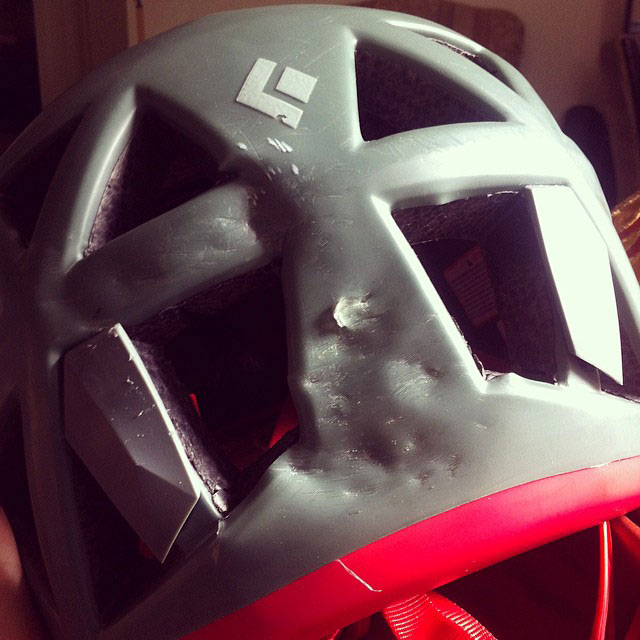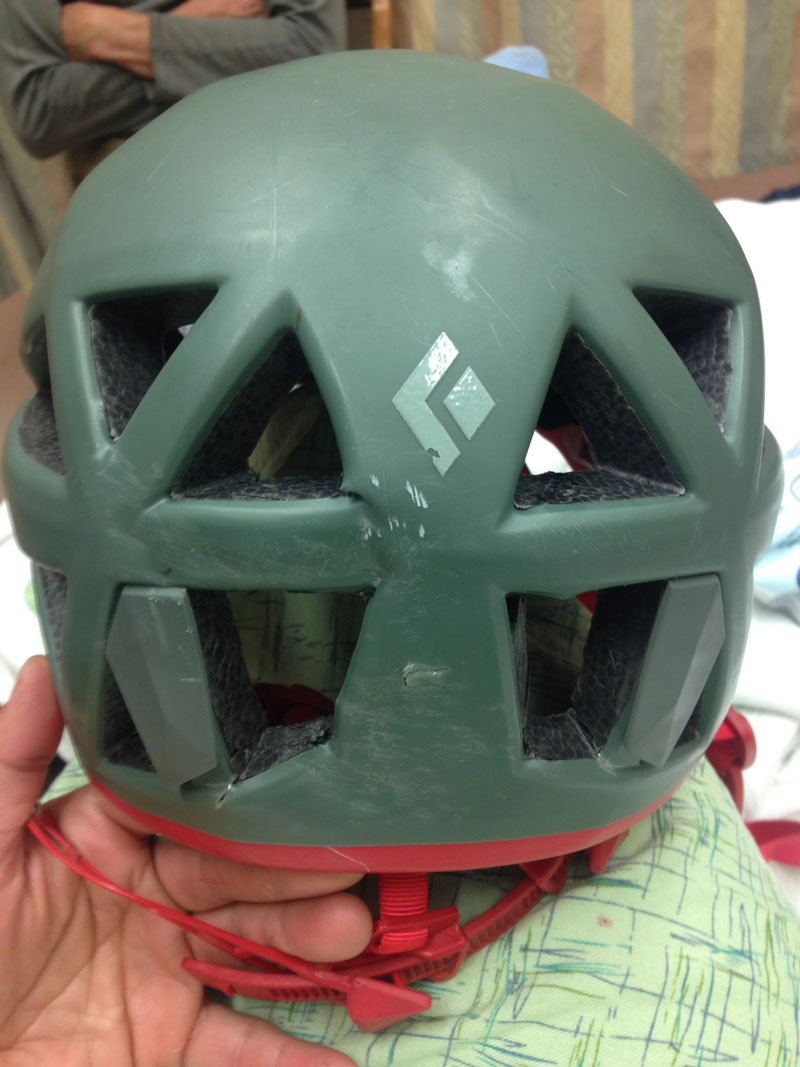



Unhappy Birthday
Allie Levy, Eleven Mile Canyon, Colorado
I felt super solid. The route (appropriately named Harder Than It Looks) was comfortably within my difficulty range and well-suited to my strengths: delicate and slabby at the bottom, with a fun-looking undercling near the top.
I had just completed a day of self-rescue instruction with a guide service. Having finished a bit ahead of schedule, our guide had asked if we'd like to climb a pitch or two before heading home. It was my birthday, and I was eager to get in at least one pitch after a long day of instruction. I jumped at the chance to lead.
I cruised past the first three bolts, feeling only as apprehensive as I usually do on lead and enjoying the delicate moves up the slab. I departed the last small ledge and headed up and right. At the base of the undercling, I placed a 0.5 Camalot, extended the piece with a sling, smiled to myself at the textbook placement, and continued through the crux, underclinging up and to the left.
The fall was unexpected. As I turned my right hip into the wall and reached for the exit jug, my foot popped. It happened quickly—one moment I was hoping my gear would hold, and the next I was swinging from my rope, upside down, with the worst headache of my life.
A year later, we're still not entirely sure what caused me to flip upside down, but it was most likely some combination of the ledge below the undercling, the diagonal stretch of rope from my last piece, and the swing I took.
A year later, we're still not entirely sure what caused me to flip upside down, but it was most likely some combination of the ledge below the undercling, the diagonal stretch of rope from my last piece, and the swing I took. I fell around 12 or 15 feet, leaving me dangling 15 or 20 feet above the ground. Our guide soloed up the slab to turn me right side up and grab the gear I'd left after David lowered me to the ground.
When I saw the blood inside my helmet, I realized how lucky I had been. A trip to the hospital confirmed a concussion, and I got a few staples in my scalp. I had hefty scrapes and bruises on the backs of my hands from hitting the wall upside-down.
Over a year later, I'm left with a subpar sense of smell. When the back of my head hit the wall, the front of my brain slammed against my skull and compressed the nerves running through my nasal passage. When I'm on the sharp end, I still get flashbacks and waves of dizziness, no matter how mellow the climb. But any time I think about how much stronger I might be climbing had I never had an accident, or how I'd still be able to smell the difference between coffee and cigarettes, I redirect my train of thought to how fortunate I am that the outcome was not any worse.
October 5 used to be just my birthday. Now it's also reminder of how lucky I am to be alive, and how a helmet can make all the difference.
Read the full report and analysis from Accidents in North American Mountaineering.